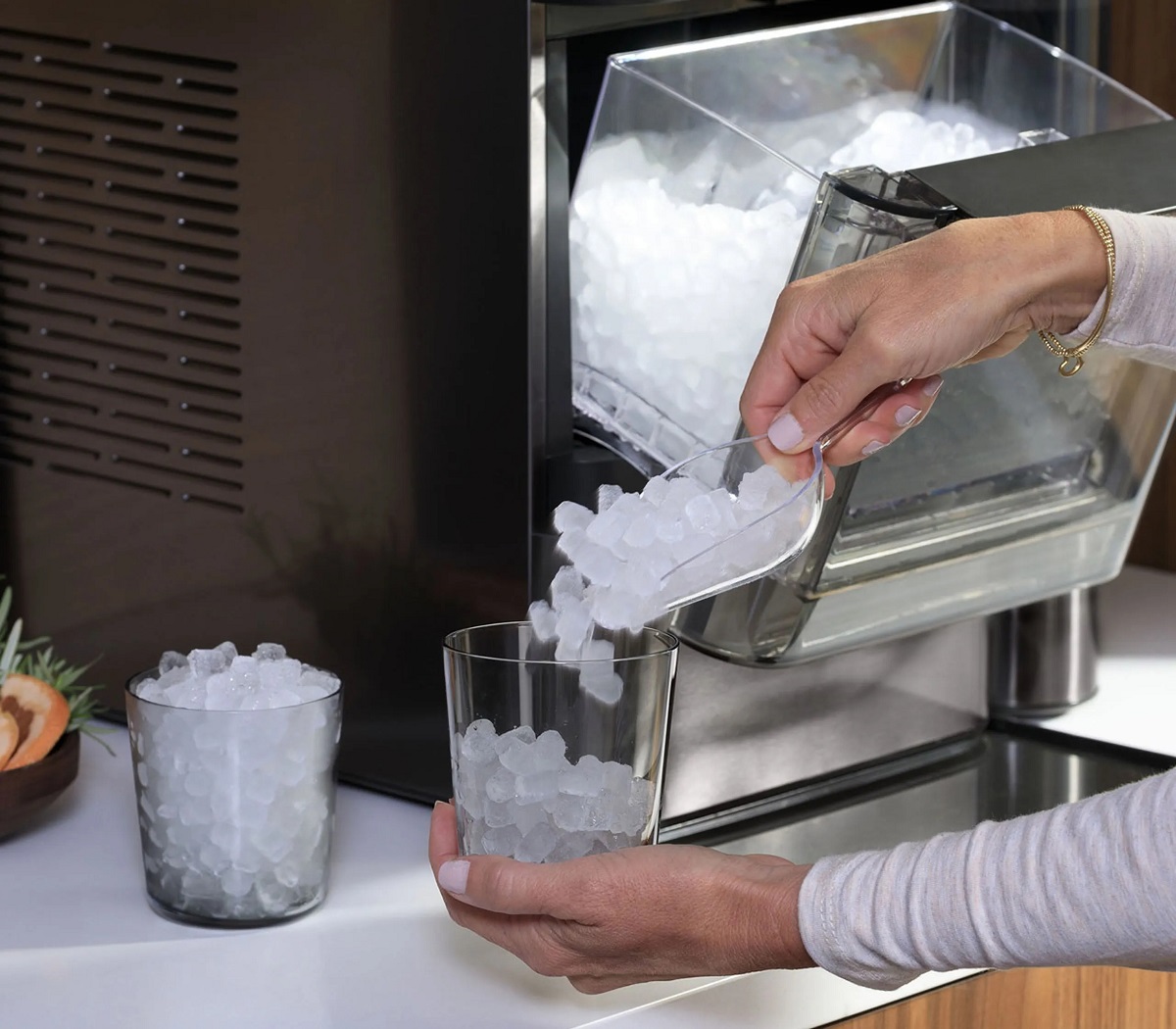

Articles
How Does An Ice Maker Work?
Modified: February 29, 2024
Want to know how an ice maker works? Read this informative article that explains the process and mechanics behind these handy devices.
(Many of the links in this article redirect to a specific reviewed product. Your purchase of these products through affiliate links helps to generate commission for Storables.com, at no extra cost. Learn more)
Introduction
Ice makers have become an indispensable appliance in our modern kitchens, providing us with a convenient supply of ice for our beverages and various cooling purposes. But have you ever wondered how these marvels of technology actually work? In this article, we will explore the fascinating inner workings of an ice maker.
An ice maker is usually found in refrigerators or as standalone appliances. It operates by taking water from a source, freezing it, and then harvesting the resulting ice cubes. The process may seem simple, but it involves several components and a carefully orchestrated sequence of events.
In this article, we will go through the essential components of an ice maker and explain how they work together to create those refreshing ice cubes. We will then outline the step-by-step process of how an ice maker functions, from water fill to ice harvest, and finally, discuss maintenance tips and troubleshooting common issues.
So, if you’re ready to delve into the inner workings of an ice maker and gain a deeper understanding of this remarkable kitchen appliance, let’s dive in.
Key Takeaways:
- Understanding the intricate process and components of an ice maker provides a greater appreciation for the engineering and technology behind this essential kitchen appliance.
- Regular maintenance and troubleshooting are crucial for ensuring the optimal performance and longevity of an ice maker, ensuring a continuous supply of high-quality ice cubes for years to come.
Read more: How Does A Refrigerator Ice Maker Work
Ice Maker Components
Before we dive into the inner workings of an ice maker, let’s familiarize ourselves with its key components. Understanding these components will help us grasp how they work together to create ice.
1. Water Supply: Every ice maker requires a water supply to fill the ice tray. This can be connected directly to a water line or filled manually through a water reservoir.
2. Water Valve: The water valve controls the flow of water into the ice maker. It opens when the ice maker needs to fill the tray and closes when the desired fill level is reached.
3. Refrigeration System: The refrigeration system is the heart of an ice maker. It consists of an evaporator, a condenser, and a compressor. Together, these components facilitate the transfer of heat and the conversion of water into ice.
4. Evaporator: The evaporator is responsible for absorbing heat from the water, causing it to freeze and form ice cubes. It is located inside the ice maker and is cooled by refrigerant circulating through it.
5. Condenser: The condenser is responsible for releasing the heat absorbed by the evaporator. It is usually located at the back or bottom of the ice maker and dissipates the heat to the surrounding environment.
6. Compressor: The compressor plays a crucial role in the refrigeration system by compressing the refrigerant and raising its pressure. This high-pressure refrigerant then flows to the condenser to release the absorbed heat.
7. Ice Tray: The ice tray is where the water is frozen and transformed into ice cubes. It is typically made of plastic or metal and contains compartments for water to fill and freeze.
8. Ice Scoop: The ice scoop is used to extract the ice cubes from the ice maker’s storage compartment. It is designed to be easy to hold and distribute the ice cubes without causing too much mess.
Now that we have familiarized ourselves with the essential components of an ice maker, let’s explore how they work in harmony to create ice in the next sections.
Water Supply
The water supply is a vital component of an ice maker as it provides the water needed to create ice. The source of the water can vary depending on the type of ice maker. Let’s explore the different water supply options:
1. Direct Water Line Connection: Many modern refrigerators come equipped with a water line connection that allows the ice maker to directly tap into the household water supply. This ensures a continuous flow of water to the ice maker, eliminating the need for manual refilling.
2. Water Reservoir: Some ice makers, especially portable or countertop models, have a built-in water reservoir. In this case, users manually fill the reservoir with water, and the ice maker draws water from it to fill the ice tray. This option provides more flexibility in terms of placement and doesn’t require a direct water line connection.
Regardless of the water supply method, it is essential to ensure the water used in the ice maker is clean and free from impurities. If the tap water in your area has a high mineral content, you may consider using a water filter to improve the quality of the ice produced.
It is worth noting that some ice makers also come with a built-in water filter, further enhancing the quality of the ice cubes. These filters help remove impurities, odors, and unpleasant tastes from the water, resulting in crystal-clear and great-tasting ice.
Having a reliable and clean water supply is crucial for the proper functioning of an ice maker. Without it, the ice maker would not be able to produce ice cubes efficiently. Therefore, it is essential to ensure that the water supply to your ice maker is properly connected and maintained for optimal performance.
Water Valve
When it comes to the operation of an ice maker, the water valve plays a critical role. The water valve is responsible for regulating the flow of water into the ice maker, controlling the amount of water that fills the ice tray. Let’s take a closer look at how the water valve works:
1. Opening: When the ice maker initiates the ice-making process, a signal is sent to the water valve, triggering it to open. The valve allows water from the water supply to flow into the ice maker’s waterline.
2. Filling the Ice Tray: As the water valve opens, water is directed into the ice maker’s waterline, which leads to the ice tray. The water fills the compartments of the ice tray, ready to be transformed into ice cubes.
3. Shut-off: The water valve is equipped with a mechanism to detect the fill level of the ice tray. Once the desired fill level is reached, the water valve shuts off, stopping the flow of water into the ice maker. This ensures that the ice tray is not overfilled.
4. Precise Control: The water valve allows for precise control over the amount of water that fills the ice tray. This is important to ensure that the ice cubes produced are of the desired size and shape. If the water level is too low, the ice cubes may be small and hollow. Conversely, if the water level is too high, the ice cubes may be overly large and prone to sticking together.
It is important to note that the water valve operates in conjunction with the ice maker’s control system. The control system monitors various factors such as temperature and ice levels to determine when to initiate the ice-making process and when to stop the water flow. This ensures that the ice maker operates efficiently and produces ice cubes as needed.
Overall, the water valve is a crucial component of an ice maker as it controls the flow and amount of water that fills the ice tray. Its ability to precisely regulate the water level contributes to the production of high-quality ice cubes.
Refrigeration System
The refrigeration system is the heart of an ice maker. It consists of three key components: the evaporator, the condenser, and the compressor. Together, these components work in harmony to facilitate the transfer of heat and transform water into ice. Let’s explore how the refrigeration system operates:
1. Evaporator: The evaporator is located inside the ice maker and is responsible for absorbing heat from the water. It is a coil or plate that is cooled by the circulation of refrigerant. As the warm water comes into contact with the cold evaporator, the heat is transferred from the water to the refrigerant, causing the water to freeze and form ice.
2. Condenser: The condenser is typically located at the back or bottom of the ice maker. Its main function is to release the heat that is absorbed by the evaporator. The refrigerant, carrying the excess heat from the evaporator, enters the condenser. Here, the refrigerant is cooled down, and the heat is dissipated to the surrounding environment.
3. Compressor: The compressor is the workhorse of the refrigeration system. Its primary function is to compress the refrigerant, raising its pressure and temperature. By compressing the refrigerant, its energy level increases, enabling it to release the absorbed heat more efficiently in the condenser. The compressor continuously circulates the refrigerant through the evaporator and condenser, maintaining the cycle of heat transfer.
The refrigeration system in an ice maker operates on the principles of thermodynamics. By removing heat from the water and releasing it to the surrounding environment, it enables the transformation of water into ice. This process is repeated continuously to ensure a steady supply of ice cubes.
It’s worth noting that some advanced ice makers may also incorporate additional features, such as dual evaporators or multiple cooling zones. These features help optimize the ice-making process by providing precise temperature control and reducing the risk of odors or flavors from affecting the ice cubes.
The refrigeration system in an ice maker is what makes the magic happen. Without it, the water would remain as water, rather than freezing into the refreshing ice cubes we enjoy. So, the next time you grab a handful of ice from your ice maker, remember to appreciate the intricate workings of the refrigeration system that make it all possible.
Read more: How Does Countertop Ice Maker Work
Evaporator
The evaporator is a crucial component of the refrigeration system in an ice maker. Its primary function is to absorb heat from the water and facilitate the freezing process, transforming the water into solid ice cubes. Let’s delve deeper into the workings of the evaporator:
1. Location and Design: The evaporator is typically located inside the ice maker and is in direct contact with the water that enters the ice tray. It is designed as a coil or plate, maximizing the surface area available for heat transfer. The shape and arrangement of the evaporator are optimized to ensure efficient cooling and freezing of the water.
2. Cooling Process: The evaporator works based on the principle of heat transfer. As the warm water enters the ice maker, it comes into contact with the cold surface of the evaporator. The low temperature of the evaporator causes the heat from the water to flow towards it, resulting in the cooling of the water.
3. Absorbing Heat: As the water loses heat to the evaporator, its temperature drops below the freezing point. This causes the water molecules to slow down and bond together, forming the initial stage of ice formation. The evaporator continues to absorb heat from the water, gradually freezing it into solid ice cubes.
4. Refrigerant: The evaporator is in direct contact with a refrigerant, a substance with low boiling temperature, such as R134a. The refrigerant is continuously circulated within the evaporator, transferring heat from the water to itself. As the refrigerant absorbs heat, it changes from a low-pressure vapor to a high-pressure, high-temperature gas.
5. Cooling Efficiency: The efficiency of the evaporator is crucial for the ice-making process. It is designed to maximize heat transfer, ensuring that the water freezes quickly and evenly. Factors such as surface area, temperature difference, and insulation play a role in determining the cooling efficiency of the evaporator.
6. Defrosting: Over time, ice can accumulate on the surface of the evaporator, reducing its efficiency. To maintain optimal performance, some ice makers incorporate defrosting mechanisms. These mechanisms employ techniques such as heat coils or hot gas defrost to melt the ice buildup on the evaporator, ensuring continued efficiency in the ice-making process.
The evaporator is an essential component that enables the ice maker to convert water into solid ice cubes. Its ability to absorb heat from the water and rapidly cool it plays a crucial role in the ice-making process. So, the next time you enjoy a cool beverage with ice cubes, remember to appreciate the work of the evaporator in creating that refreshing touch.
Condenser
The condenser is a vital component of the refrigeration system in an ice maker. Its main function is to release the heat that is absorbed by the evaporator during the ice-making process. Let’s explore how the condenser works and its role in the ice maker:
1. Location and Design: The condenser is typically located at the back or bottom of the ice maker. It consists of a series of coils or fins that facilitate heat dissipation. The design of the condenser maximizes the surface area available for heat transfer, allowing for efficient cooling.
2. Heat Transfer: After the evaporator absorbs heat from the water, it carries the heat in the form of a high-pressure, high-temperature refrigerant gas. This gas enters the condenser, where it transfers its heat to the surrounding environment. As the refrigerant cools down, it undergoes a phase change from gas to liquid.
3. Cooling Process: The condenser works based on the principle of heat exchange. The high-pressure refrigerant vapor enters the condenser’s coils, which are in contact with the outside air. As the refrigerant releases heat, it undergoes condensation, transforming from a gas to a liquid state.
4. Heat Dissipation: The coils or fins of the condenser are designed to enhance heat dissipation into the surrounding air. Airflow, either natural or assisted by a fan, helps in carrying away the heat from the condenser. This process lowers the temperature of the refrigerant, preparing it to undergo compression in the next stage of the refrigeration cycle.
5. Efficiencies and Types: The condenser in an ice maker can be of different types, including air-cooled, water-cooled, or even evaporative condensers. Each type offers specific advantages and efficiencies depending on the ice maker’s design and intended use.
6. Maintenance: Keeping the condenser clean and free from dust or debris is essential for optimal performance. Regular cleaning and inspection of the condenser coils will help ensure smooth heat transfer and prevent any obstructions that could hinder heat dissipation.
The condenser plays a crucial role in the ice-making process by releasing the heat absorbed by the evaporator and facilitating efficient cooling. Its ability to dissipate heat effectively ensures that the ice maker functions properly and produces ice cubes consistently. So, next time you enjoy your favorite cold beverage with ice, remember to appreciate the important work of the condenser in creating those refreshing ice cubes.
Compressor
The compressor is a key component of the refrigeration system in an ice maker. It is responsible for compressing the refrigerant, raising its pressure and temperature, and facilitating the transfer of heat. Let’s delve into the role and functioning of the compressor in an ice maker:
1. Compression Process: The compressor is typically located in the back of the ice maker. It is an electrically powered device that compresses the low-pressure refrigerant vapor received from the evaporator. As the refrigerant enters the compressor, it undergoes compression, causing both its pressure and temperature to rise.
2. Increasing Energy Level: By compressing the refrigerant, the compressor increases its energy level, allowing for efficient heat transfer in subsequent stages of the refrigeration cycle. The high-pressure refrigerant vapor exits the compressor and flows towards the condenser, carrying the absorbed heat from the evaporator.
3. Timing and Cycle Control: The compressor’s operation is controlled by the ice maker’s control system, which monitors various factors such as temperature and ice levels. The control system determines when to initiate the ice-making process and when to stop the refrigerant flow. This ensures that the compressor operates only when necessary, optimizing energy consumption and ice production.
4. Types of Compressors: There are different types of compressors used in ice makers, including reciprocating compressors, rotary compressors, and scroll compressors. Each type has its own advantages in terms of efficiency, noise level, and reliability. The specific type of compressor used may vary depending on the design and specifications of the ice maker.
5. Maintenance: Proper maintenance of the compressor is crucial for the ice maker’s performance and longevity. Regular checks, such as ensuring proper lubrication and cleaning of filters, can help prevent issues and ensure the compressor operates smoothly. If any issues arise, such as unusual noise or insufficient cooling, it is important to address them promptly to avoid further complications.
The compressor serves as the workhorse of the refrigeration system, providing the necessary pressure and energy for the ice maker to function efficiently. Its ability to compress the refrigerant and raise its temperature enables the transfer of heat and the conversion of water into ice. So, the next time you enjoy a chilled drink with ice cubes, spare a thought for the hard-working compressor that makes it all possible.
Ice Tray
The ice tray is a fundamental component of any ice maker. It is where the water is filled and frozen, eventually transforming into the ice cubes that we use to keep our drinks cool. Let’s explore the functions and features of the ice tray:
1. Design and Construction: The ice tray is typically made of durable materials such as plastic or metal. It is designed with multiple compartments to hold water, allowing for the formation of individual ice cubes. The size and shape of the ice tray compartments can vary depending on the desired ice cube size and the specific ice maker model.
2. Water Fill: When the ice maker initiates the ice-making process, a water valve opens, allowing water to flow into the ice tray. The water fills the compartments, ensuring that each compartment is evenly filled with water. This ensures consistent ice cube formation and prevents uneven ice cube sizes.
3. Freezing Process: Once the water is filled in the ice tray compartments, the refrigeration system begins the freezing process. The cold evaporator, located near or in contact with the ice tray, absorbs heat from the water, causing it to freeze and solidify into ice cubes. This process typically takes a few hours, depending on the temperature settings and the ice maker’s efficiency.
4. Ice Cube Release: After the water is frozen and transformed into ice cubes, the ice maker goes through a harvest cycle. This cycle involves releasing the ice cubes from the ice tray compartments. Some ice makers have mechanical mechanisms, such as twisting or flexing the ice tray, to help release the cubes. Others may use a heating element to slightly melt the ice, allowing for easy release.
5. Storage and Capacity: Once the ice cubes are released from the ice tray, they are either stored directly in a storage compartment within the ice maker or dispensed into a separate container. The ice tray’s capacity determines the number of ice cubes that can be produced in each ice-making cycle, and it can vary based on the ice maker model and design.
6. Customization: In some advanced ice makers, the ice tray may offer customization options. This includes the ability to select different ice cube shapes, such as cubes, crushed ice, or even specialty shapes like spheres or crescents. These options add versatility and cater to varying preferences for cooling beverages or enhancing presentation.
The ice tray is a pivotal component that facilitates the freezing of water and creates the ice cubes that we rely on for keeping our drinks cold. Its design, water filling process, freezing capabilities, and cube release mechanisms all contribute to the functionality and efficiency of the ice maker. So, the next time you grab a few ice cubes from your ice maker, remember to appreciate the essential role played by the ice tray in delivering that cooling refreshment.
An ice maker works by using an electric motor, water valve, and heating element to freeze water in a mold, then release the ice cubes into a storage bin. Regular cleaning and maintenance of the ice maker can help ensure it continues to work efficiently.
Read more: How Does An Ice Maker Work In A Refrigerator
Ice Scoop
The ice scoop is a handy tool that accompanies an ice maker, allowing users to easily collect and dispense ice cubes. It plays a crucial role in acquiring ice from the ice maker’s storage compartment and delivering it to our glasses or beverage containers. Let’s explore the features and functions of the ice scoop:
1. Shape and Design: The ice scoop is typically designed with a deep, shovel-like shape that allows for efficient scooping of ice cubes. It is made of a sturdy material, such as plastic or metal, ensuring its durability and longevity.
2. Comfortable Grip: The ice scoop is designed for comfortable handling. It usually features a handle with an ergonomic shape that provides a secure and comfortable grip. This allows users to scoop and dispense ice cubes with ease, minimizing any strain on the hand or wrist.
3. Ice Handling: The ice scoop’s main function is to collect ice cubes from the storage compartment of the ice maker and transfer them to other containers. Its deep shape and wide mouth allow for scooping a significant quantity of ice at once, saving time and effort.
4. Hygiene and Cleanliness: The ice scoop is an essential tool for maintaining proper hygiene and cleanliness when handling ice. It helps prevent direct contact between hands and the ice cubes, reducing the risk of contamination or transferring bacteria. By using the ice scoop, users can ensure that the ice remains sanitary and safe for consumption.
5. Controlling Ice Amount: The ice scoop provides control over the quantity of ice dispensed. Users can easily measure and allocate the desired amount of ice cubes, whether it’s for a single glass, a pitcher, or a larger container. This control helps avoid excessive ice consumption or wastage.
6. Versatility: The ice scoop is not limited to just scooping ice cubes. It can also be used for other tasks, such as filling ice buckets, chilling wine bottles in an ice bath, or even transferring other ingredients in the kitchen. Its versatile design and functionality make it a useful tool beyond just ice handling.
7. Storage and Care: When not in use, the ice scoop should be stored in a clean and dry place, away from possible contaminants. Regular cleaning and sanitizing of the scoop are important to maintain its hygiene. It is advisable to follow the manufacturer’s instructions for cleaning and storing the ice scoop.
The ice scoop is a practical accessory that enhances the convenience and cleanliness of using an ice maker. Its design, functionality, and hygiene features make it an essential tool for safely and efficiently handling ice cubes. So, the next time you scoop up some ice for your favorite beverage, remember to appreciate the humble yet indispensable ice scoop that makes it all possible.
Ice Maker Process
The process of how an ice maker works involves several steps, each carefully orchestrated to create ice cubes efficiently. Let’s dive into the various stages of the ice maker process:
1. Water Fill: The ice maker begins by filling the ice tray with water. Depending on the type of ice maker, the water can come from a direct water line connection or a manual water filling reservoir. The water fills the compartments of the ice tray, ready to be transformed into ice cubes.
2. Freezing Cycle: Once the water is filled in the ice tray, the refrigeration system kicks into action. The evaporator, located near or in contact with the ice tray, cools the water, causing it to freeze. As the water temperature drops below the freezing point, ice crystals start to form.
3. Harvesting: After the water is frozen and transformed into solid ice cubes, the ice maker enters the harvesting stage. Depending on the ice maker model, this can involve various methods to release the ice cubes from the ice tray. Mechanical mechanisms, such as twisting or flexing the tray, or heating elements, may be employed to facilitate ice cube release.
4. Storage: Once released from the ice tray, the ice cubes are either stored directly in a dedicated storage compartment within the ice maker or dispensed into a separate container. The storage compartment keeps the ice cubes cold and ready for use whenever needed. Some ice makers may have features like insulated storage or automatic ice dispensers for added convenience.
5. Water Refill: As ice cubes are harvested and used, the water level in the ice tray decreases. The ice maker’s control system monitors the ice levels and initiates a water refill when needed. This signals the water valve to open, allowing more water to fill the ice tray and begin the ice-making cycle again.
6. Continuous Process: The ice maker process continues in a cyclical manner, with the ice maker constantly monitoring ice levels, initiating water fills, freezing the water, and harvesting ice cubes. This ensures a steady supply of ice as long as the ice maker is powered and connected to a water supply.
The overall duration of the ice maker process can vary depending on several factors, including the ice maker model, size of the ice cubes, and environmental conditions. Some ice makers can produce ice cubes within a few hours, while others may take longer.
Maintaining an ice maker’s cleanliness and functionality is crucial for optimal performance. Regular cleaning, inspecting water supply connections, and following manufacturer guidelines ensure a consistent supply of high-quality ice cubes.
The ice maker process seamlessly combines water, refrigeration, and careful timing to create the ice cubes we enjoy in our beverages and for various cooling purposes. Understanding the intricacies of this process helps us appreciate the engineering behind this remarkable kitchen appliance.
Water Fill
The water fill stage is a critical step in the ice maker process as it determines the amount of water that fills the compartments of the ice tray, ultimately shaping the size and density of the resulting ice cubes. Let’s explore the water fill stage in detail:
1. Initiating the Water Fill: When it’s time to make ice, the ice maker’s control system sends a signal to the water valve, triggering it to open. The water valve is typically controlled by a solenoid and is responsible for controlling the flow of water into the ice maker.
2. Water Supply: Depending on the type of ice maker, the water may come from a direct water line connection or a manual water filling reservoir. For ice makers connected to a water line, a connection is established, allowing a constant supply of water to the ice maker. In models that require manual filling, users pour water into a designated reservoir.
3. Controlling the Fill Level: The water valve, in conjunction with sensors or a timer in the control system, determines the fill level of the ice tray. Once the water valve opens, water flows into the ice maker’s waterline and fills the compartments of the ice tray. The sensors or timer monitor the fill level and signal the water valve to close when the desired amount of water has been reached.
4. Desired Fill Level: The fill level of the ice tray is crucial in determining the size and density of the resulting ice cubes. A higher fill level will result in larger ice cubes, while a lower fill level will produce smaller ice cubes. The desired fill level is typically predetermined by the ice maker’s design and can be adjustable in some models.
5. Overfill Prevention: The ice maker’s control system is designed to prevent overfilling of the ice tray. The control system monitors the fill level, and when the desired level is reached, it signals the water valve to close. This ensures that the water does not overflow or cause any damage to the ice maker or surrounding components.
6. Water Quality: The quality of the water used in the ice maker is crucial for the taste and clarity of the resulting ice cubes. It is recommended to use clean, filtered water to minimize impurities and potential odors transferred to the ice. Some ice makers also come with built-in water filters to enhance water quality.
7. Ice Cube Formation: Once the water has filled the compartments of the ice tray, the refrigeration system takes over. The cold evaporator, in contact with the water-filled compartments, absorbs heat from the water, causing it to freeze and form solid ice cubes.
The water fill stage in the ice maker sets the foundation for the subsequent freezing and harvesting stages. By controlling the fill level, water quality, and overfill prevention, the ice maker ensures the production of consistent and properly sized ice cubes. So, the next time you enjoy a refreshing drink with ice cubes, appreciate this essential stage in the ice maker process that shapes the ice you savor.
Freezing Cycle
The freezing cycle is a crucial stage in the ice maker process where water is transformed into solid ice cubes. This phase involves the cooling and freezing of water, resulting in the formation of the desired ice cubes. Let’s dive into the freezing cycle and understand how it works:
1. Heat Transfer: Once the water fill stage is complete and the ice tray compartments are filled with water, the refrigeration system, comprising the evaporator, condenser, and compressor, comes into play. The cold evaporator, in contact with the water-filled compartments, absorbs heat from the water.
2. Lowering Temperature: As the evaporator absorbs heat from the water, it lowers the temperature of the water below its freezing point. This causes the water molecules to slow down and form ice crystals, initiating the freezing process. The longer the water is in contact with the cold evaporator, the more ice crystals are formed.
3. Ice Formation: As the water temperature continues to drop, the ice crystals grow and bond together, gradually filling the entire compartment of the ice tray. The evaporator keeps extracting heat from the water, ensuring the continued freezing of the remaining water until it has all transformed into solid ice.
4. Even Freezing: To ensure even freezing and consistent ice cube formation, some ice makers may incorporate features like rotating or flexing the ice tray. These mechanisms help to prevent the formation of air pockets and ensure that the water is evenly distributed throughout the compartments of the ice tray.
5. Timing and Temperature Control: The control system of the ice maker plays an essential role in the freezing cycle. It monitors various factors such as time and temperature to determine the duration of the freezing cycle. This ensures that the ice cubes are frozen to the desired consistency without over-freezing or under-freezing.
6. Insulation: Some ice makers incorporate insulation in the construction of the ice tray or the surrounding components. This insulation helps to maintain the low temperature required for freezing, preventing heat from entering the ice tray and ensuring efficient ice cube formation.
7. Duration of Freezing: The time needed to freeze the water and form solid ice cubes can vary depending on factors such as the ice maker model, size of the ice cubes, and environmental conditions. Generally, it takes a few hours for the water to freeze completely and transform into ice cubes.
The freezing cycle is a critical phase in the ice maker process, as it determines the quality and consistency of the ice cubes produced. By efficiently cooling and freezing the water, the ice maker ensures the creation of solid ice cubes that are ready to be harvested and used for various cooling purposes.
So, the next time you grab a handful of ice cubes from your ice maker, marvel at the intricacies of the freezing cycle that turn water into those delightful frozen companions.
Read more: How Does Frigidaire Ice Maker Work
Harvesting
The harvesting stage is a crucial step in the ice maker process where the ice cubes are released from the ice tray and made ready for use. This stage involves mechanisms or techniques to free the ice cubes from the ice tray compartments. Let’s explore the harvesting process in detail:
1. Initiation of Harvest: When the ice cubes are fully frozen and ready for collection, the ice maker’s control system detects it through sensors or timers. The control system initiates the harvest cycle, signaling the ice tray to prepare for the release of the ice cubes.
2. Mechanical Mechanisms: Many ice makers utilize mechanical mechanisms to release the ice cubes from the ice tray compartments. This can include twisting, flexing, or vibrating the ice tray to break the bond between the ice cubes and the tray. These mechanisms help loosen the ice cubes, making them easier to separate from the ice tray.
3. Heating Elements: Some ice makers incorporate heating elements in the ice tray or near the bottom surface. These elements slightly melt the ice cubes, creating a thin layer of water that acts as a lubricant between the cubes and the tray. This enables easier release of the ice cubes without causing any damage to the ice tray or the cubes themselves.
4. Gravity or Inversion: In certain ice makers, gravity or inversion techniques are employed to aid in the harvesting process. These methods involve tilting or inverting the ice tray, allowing the ice cubes to naturally separate from the tray due to gravity or through shaking actions. These techniques can be seen in portable or manual ice makers.
5. Storage or Dispensing: Once the ice cubes are released from the ice tray, they either fall into a dedicated storage compartment within the ice maker or are dispensed into a separate container. The storage compartment keeps the ice cubes cold and ready for use, while a dispenser ensures easy access and convenience for serving.
6. Ice Level Monitoring: The control system of the ice maker continuously monitors the ice levels to ensure an adequate supply is maintained. If the ice level drops below a certain threshold, the ice maker initiates another ice-making cycle, starting with the water fill stage, to replenish the supply of ice.
7. Ice Cube Quality: The harvesting process is designed to release the ice cubes intact and without modifications to their shape. This ensures that the ice cubes maintain their optimal quality and do not merge or stick together. The process aims to deliver individual ice cubes that are ready to cool beverages and other applications.
The harvesting stage is where the hard work of the ice maker culminates in the release of the frozen gems – the ice cubes. Through mechanical mechanisms, heating elements, or inversion techniques, the ice maker ensures the efficient separation and collection of the ice cubes, ready to be used in cooling our drinks or preserving food.
So, the next time you see the ice cubes tumbling into your glass or being dispensed effortlessly, appreciate the meticulous harvesting process that delivers those refreshing ice cubes to enhance your beverage experience.
Storage
The storage stage is a crucial component of the ice maker process, where the harvested ice cubes are stored until they are ready to be used. This stage ensures that a continuous supply of ice is readily available when needed. Let’s explore the storage process in detail:
1. Storage Compartment: Most ice makers have a dedicated storage compartment designed to hold the harvested ice cubes. This compartment is insulated to maintain a low temperature, preventing the ice cubes from melting and ensuring their longevity.
2. Controlled Environment: The storage compartment is designed to maintain optimal conditions for storing ice cubes. It is often kept at a temperature below freezing point but above the freezing point of water to prevent the ice cubes from sticking together. This controlled environment helps to maintain the quality and integrity of the ice cubes.
3. Insulation: The storage compartment is typically insulated to minimize temperature fluctuations and prevent heat transfer from the surrounding environment. Insulation helps to keep the temperature stable, allowing the ice cubes to remain in a solid state without premature melting.
4. Ice Level Monitoring: The ice maker’s control system monitors the ice level in the storage compartment to ensure an adequate supply is maintained. Sensors or timers within the ice maker detect the ice level and signal the ice maker to initiate another cycle if the level drops below a certain threshold. This ensures a continuous supply of ice cubes without any disruption.
5. Ice Dispensing: In some ice makers, especially those integrated into refrigerators, there may be a dispenser feature that allows for easy retrieval of the ice cubes. A mechanism, controlled by buttons or levers, dispenses the desired amount of ice cubes into a container without having to open the storage compartment. This feature adds convenience and reduces the risk of contamination.
6. Ice Quality Maintenance: The storage compartment is designed to maintain the quality of the ice cubes while minimizing any potential deterioration. It helps to prevent the ice cubes from absorbing odors or flavors from the surrounding environment, ensuring that they remain clean and free from any unwanted tastes or smells.
7. Ice Transfer: When it is time to use the ice cubes, they can be transferred from the storage compartment to a separate container or directly into glasses or beverage containers. This transfer is typically done using an ice scoop or by activating the ice dispenser, ensuring hygienic handling and preventing any contamination.
The storage stage is crucial for maintaining a consistent supply of ice cubes. By providing an insulated and controlled environment, the storage compartment keeps the ice cubes frozen and ready for use. It simplifies the process of retrieving the ice cubes and ensures that they maintain their quality until they are needed for cooling beverages or other applications.
So, the next time you reach for a handful of ice cubes from your ice maker’s storage compartment, appreciate the important role it plays in preserving the ice cubes and keeping them reliably cold and refreshing.
Maintenance and Troubleshooting
Maintaining your ice maker and troubleshooting any issues that may arise is crucial for its optimal performance and longevity. Regular maintenance ensures that the ice maker continues to produce high-quality ice cubes. Here are some maintenance tips and troubleshooting guidelines:
1. Regular Cleaning: Clean your ice maker regularly to prevent any buildup of mineral deposits, mold, or bacteria. Use a mild cleaning solution and warm water to clean the interior, ice tray, and storage compartment. Rinse thoroughly and allow it to dry before using it again.
2. Check Water Supply: Ensure that the water supply to the ice maker is properly connected and free from any blockages. If the ice maker is not filling with water, check the water valve, water line, and filters for any issues or obstructions.
3. Clean Filters: If your ice maker has a built-in water filter, follow the manufacturer’s guidelines for cleaning or replacing it. Clean filters help maintain the quality of the water used to make ice cubes.
4. Inspect Seals and Gaskets: Check the seals and gaskets around the ice maker’s door or access panel to ensure they are properly sealing. Damaged or worn-out seals can lead to cold air leaks and affect the ice-making process.
5. Overfill Prevention: If the ice maker is overfilling or not shutting off the water valve when the ice tray is full, it could indicate a problem with the control system or water valve. Consult the manufacturer’s instructions or consider contacting a professional for assistance.
6. Temperature Control: Check the temperature settings of your ice maker to ensure that they are appropriate for ice cube production. Adjust the settings if needed, taking into account environmental conditions and desired ice cube consistency.
7. Proper Ventilation: Provide adequate ventilation around the ice maker to ensure proper airflow and prevent overheating. Clear any obstructions around the condenser and ensure that there is sufficient space for heat dissipation.
8. Regular Inspections: Check for any loose or damaged components, such as the ice tray, water valve, or compressor. Regular inspections help identify potential issues early on and prevent further damage or malfunction.
9. Consult Manufacturer’s Guidelines: Refer to the manufacturer’s instructions and guidelines for specific maintenance recommendations and troubleshooting techniques tailored to your ice maker model.
If you encounter persistent issues or difficulties with your ice maker, it is advisable to consult the manufacturer’s customer support or seek professional assistance. They can provide further guidance and assistance in resolving complex problems or performing any necessary repairs.
By following these maintenance tips and troubleshooting guidelines, you can ensure that your ice maker continues to deliver a steady supply of high-quality ice cubes, keeping your beverages cool and refreshing for years to come.
Conclusion
An ice maker is an essential appliance that brings convenience and enjoyment to our daily lives. By understanding how an ice maker works and the various components involved, we gain a greater appreciation for the engineering and technology behind this remarkable kitchen appliance.
From the water fill stage to the freezing cycle, harvesting, and storage, each step in the ice maker process plays a crucial role in producing the ice cubes we rely on for cooling beverages and other applications. Components like the water valve, evaporator, condenser, compressor, ice tray, and ice scoop work together seamlessly to create a continuous supply of refreshing ice cubes.
Maintaining an ice maker through regular cleaning, inspecting water supply connections, and following manufacturer guidelines is important for its optimal performance. Troubleshooting any issues that may arise, such as water flow problems or overfilling, ensures that the ice maker operates smoothly for years to come.
Whether integrated into a refrigerator or as a standalone appliance, an ice maker adds convenience and elegance to our kitchens. It provides us with a constant supply of ice cubes, allowing us to cool down our favorite beverages, entertain guests, and enjoy refreshing treats.
So, the next time you reach for that perfectly chilled drink and hear the ice cubes tinkling in your glass, remember the intricate process and components that have come together to create that delightful moment of refreshment.
Frequently Asked Questions about How Does An Ice Maker Work?
Was this page helpful?
At Storables.com, we guarantee accurate and reliable information. Our content, validated by Expert Board Contributors, is crafted following stringent Editorial Policies. We're committed to providing you with well-researched, expert-backed insights for all your informational needs.
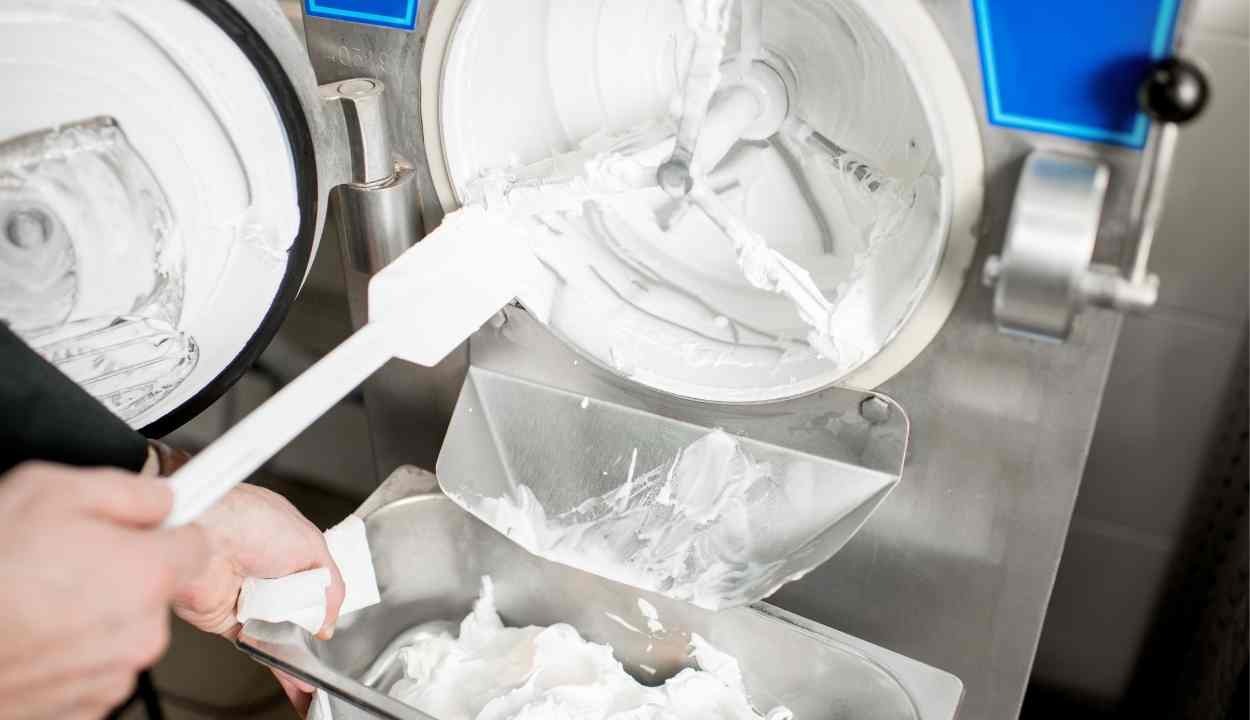
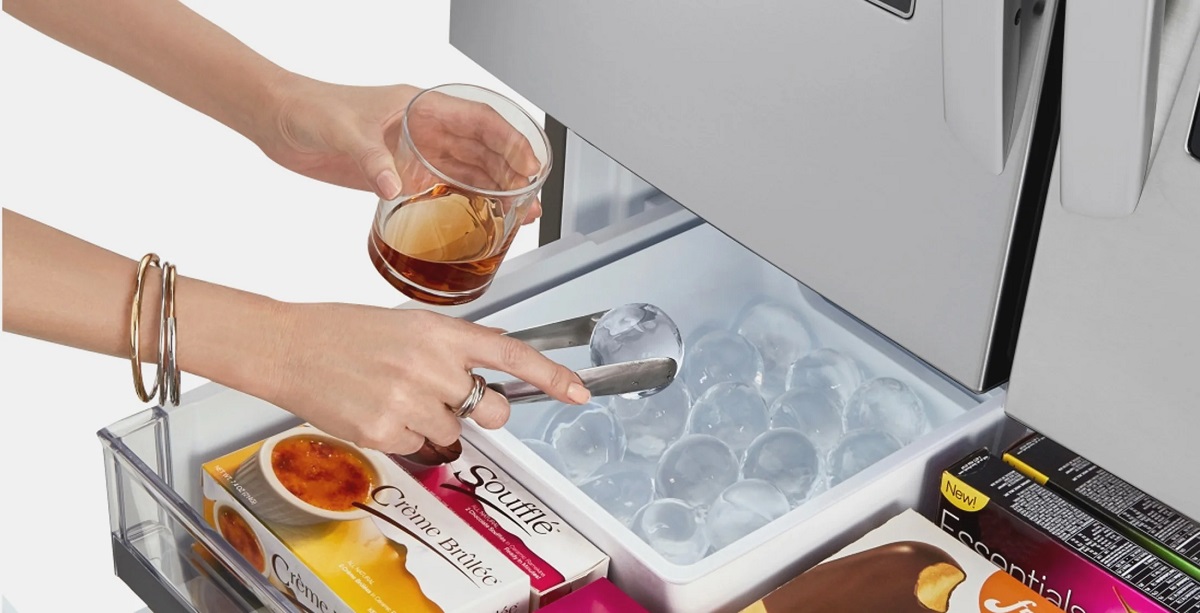
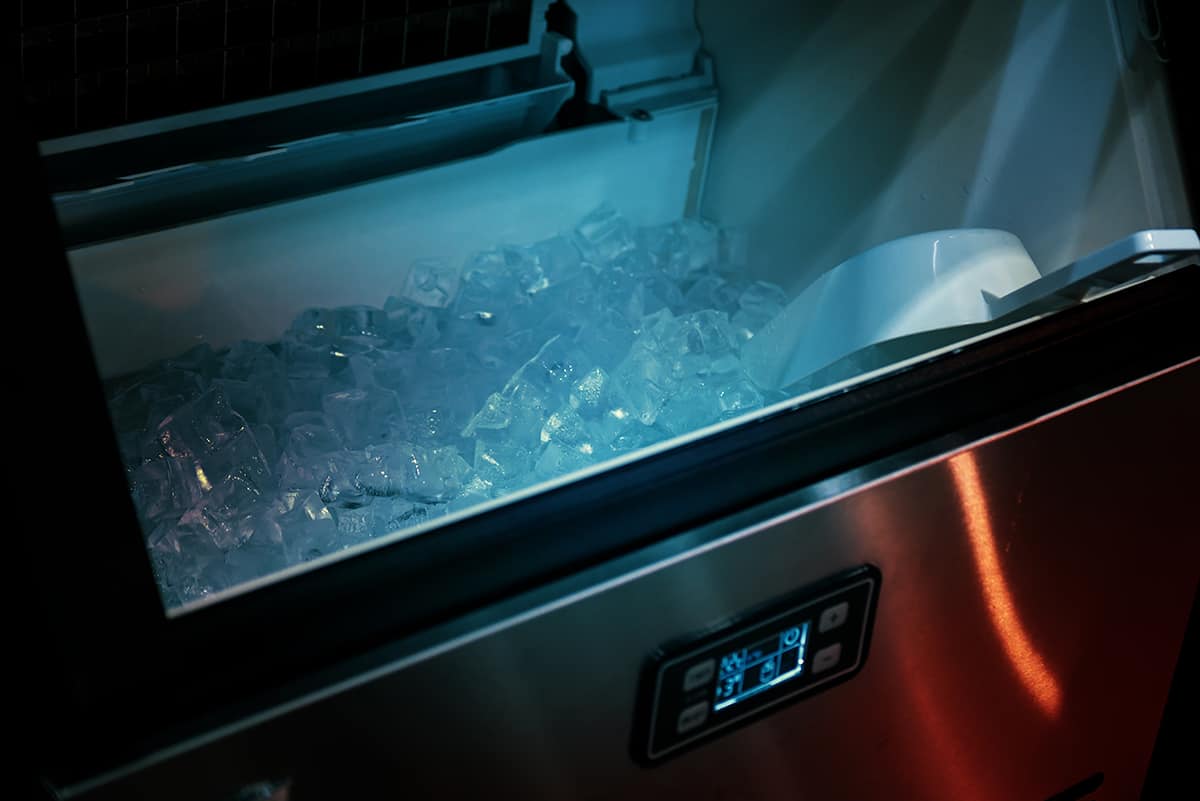
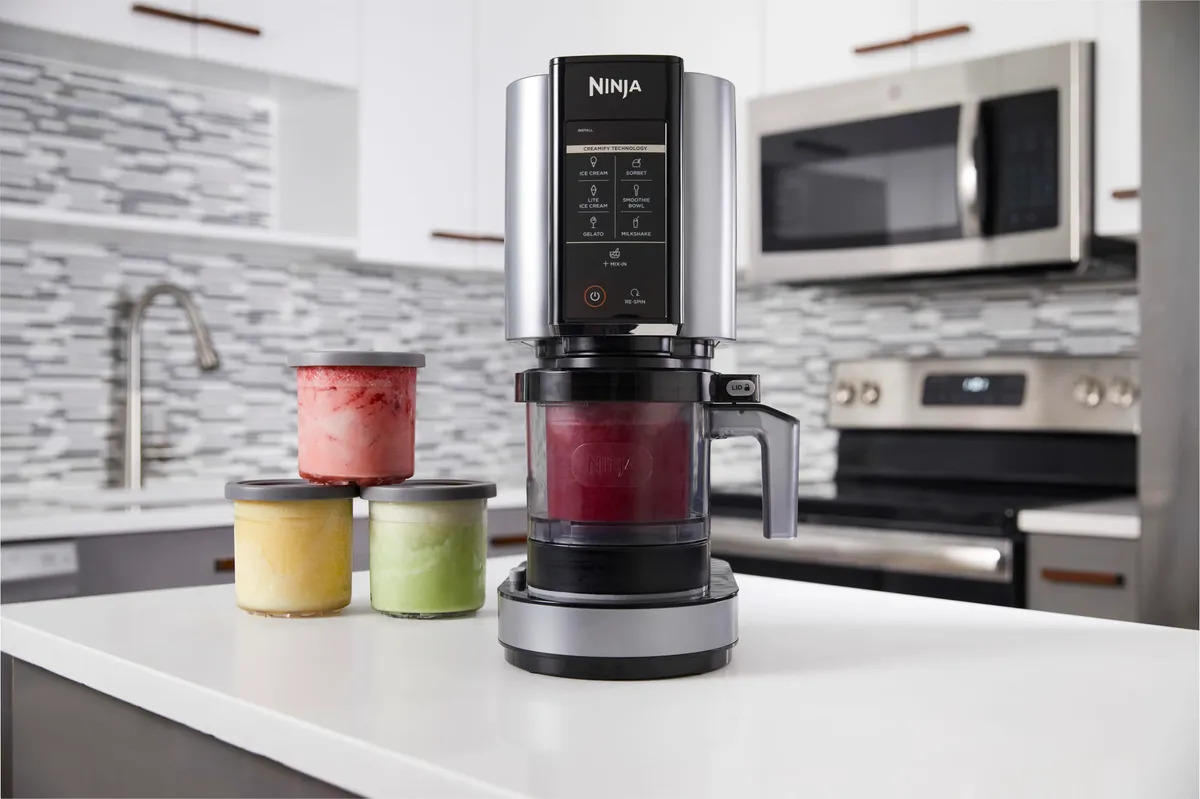
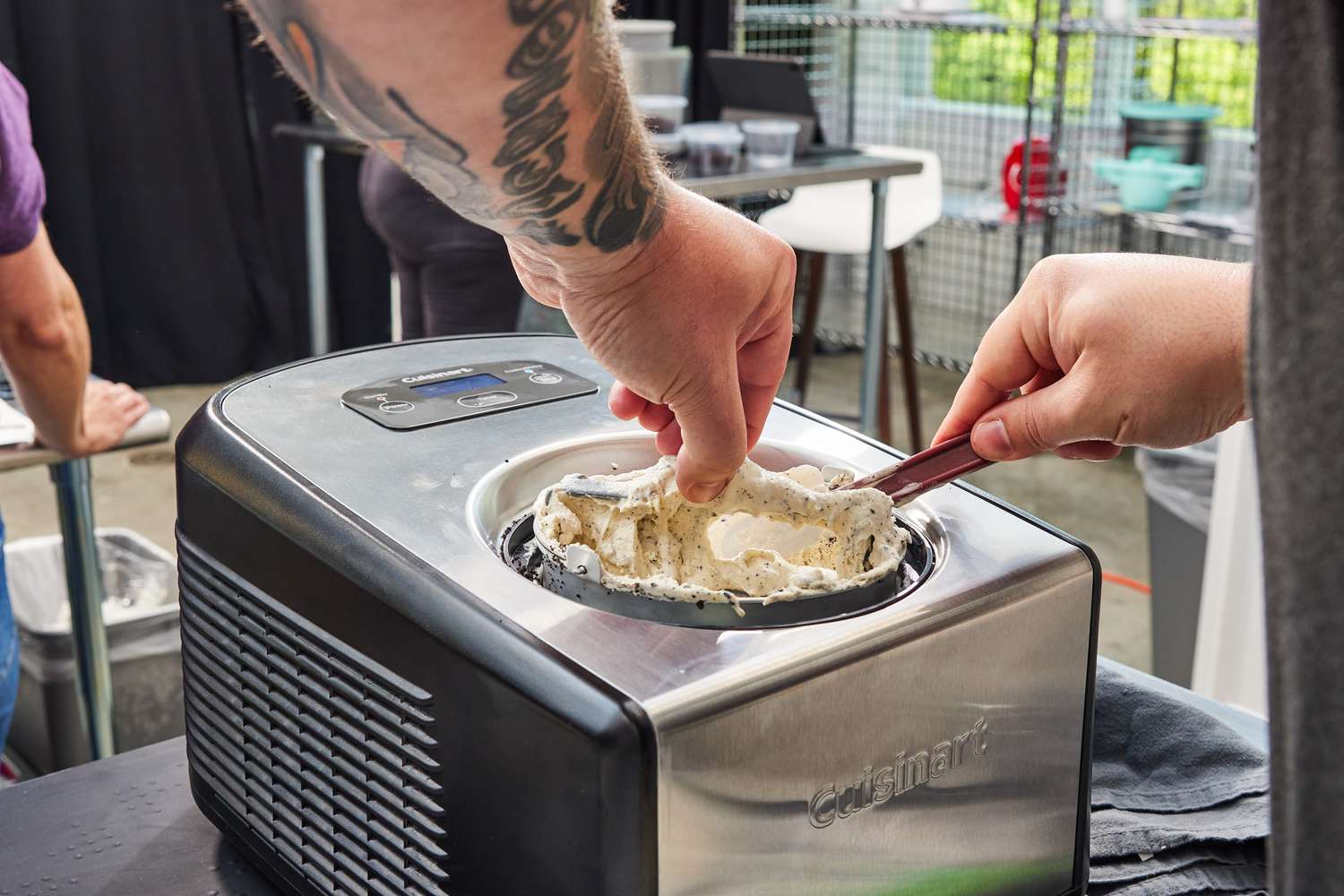
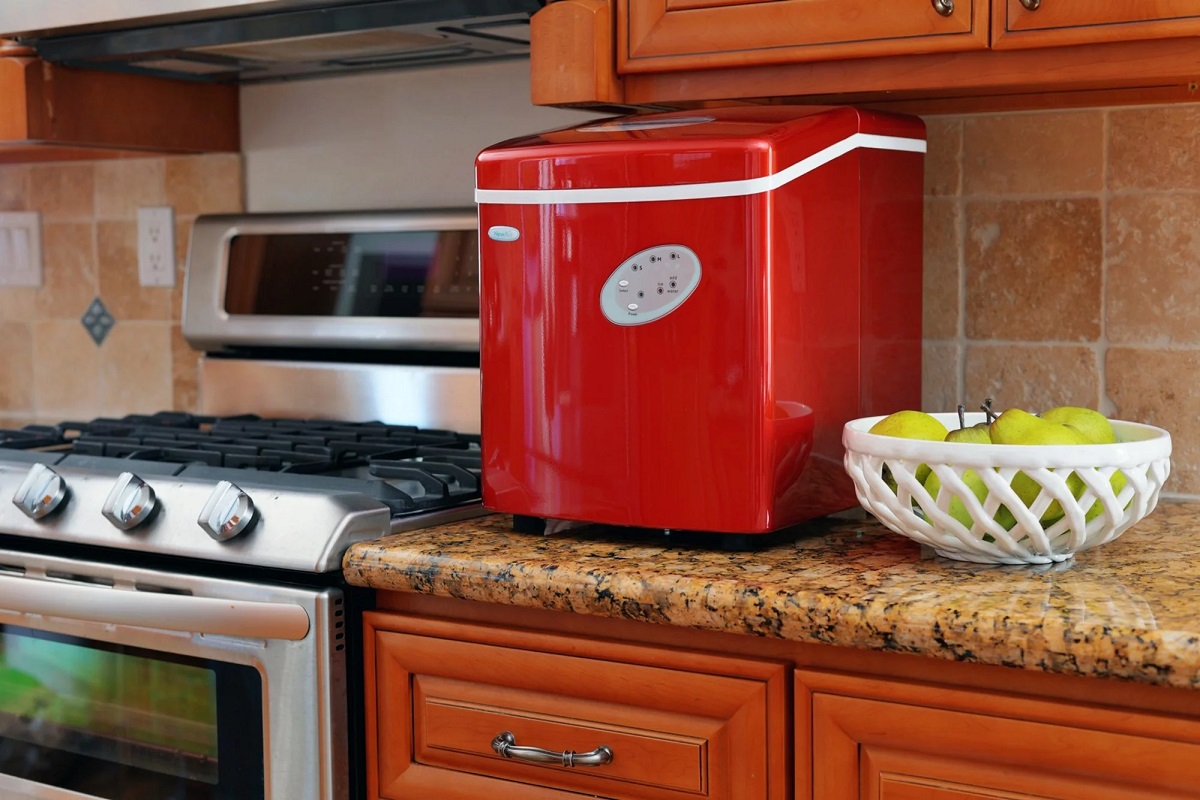
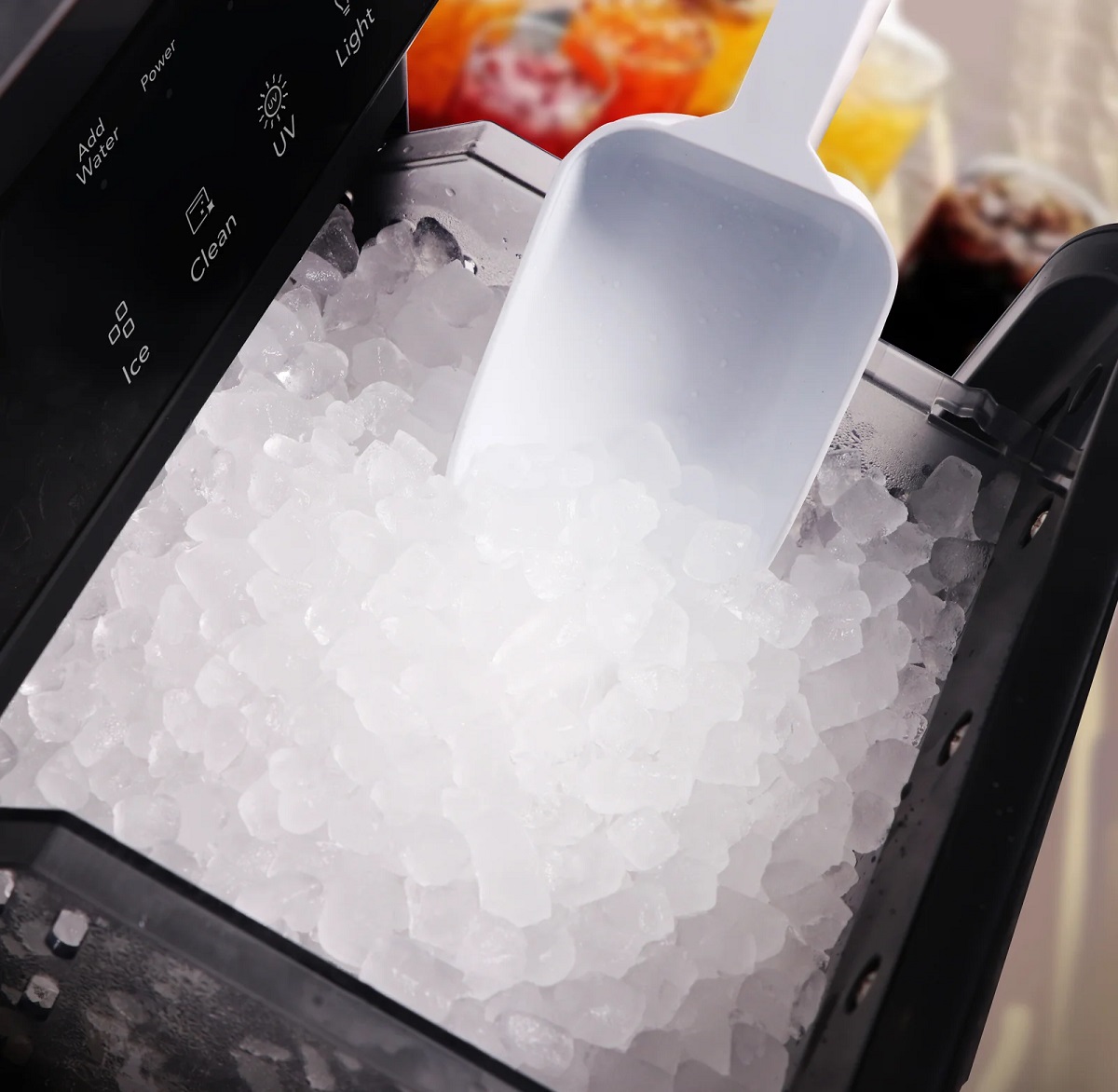
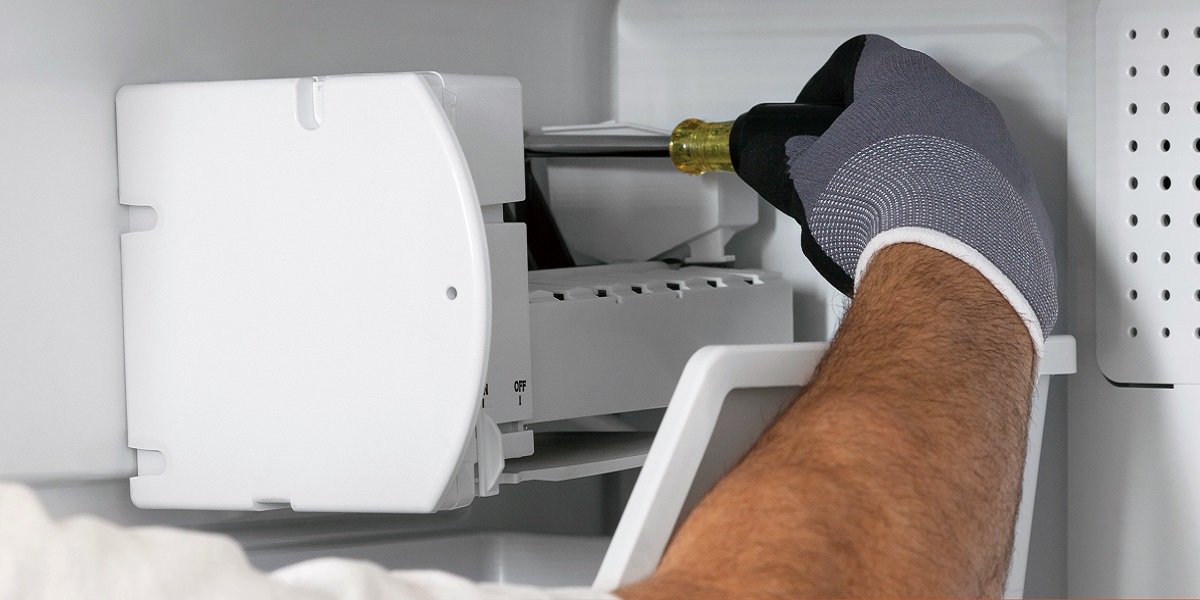
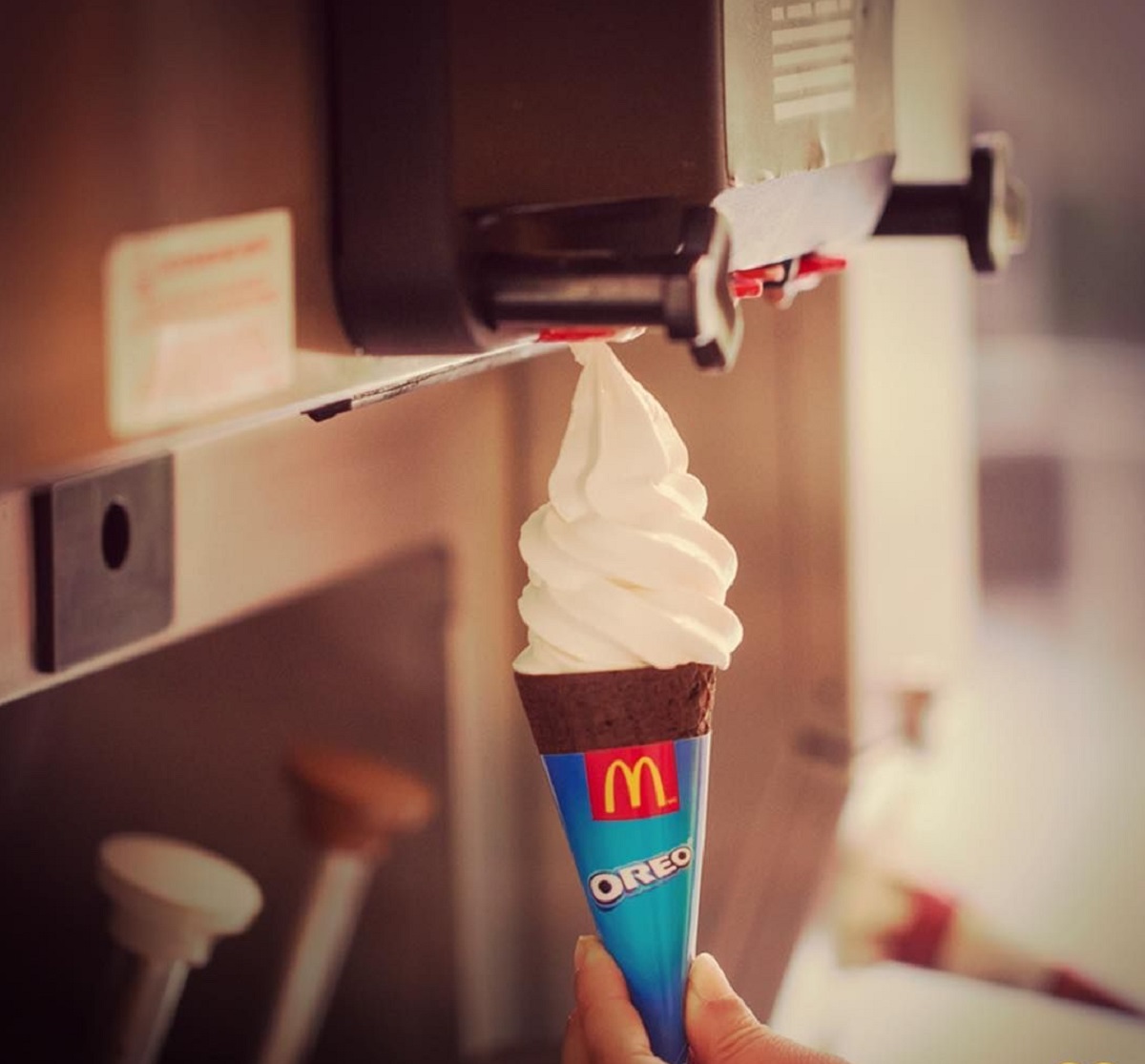
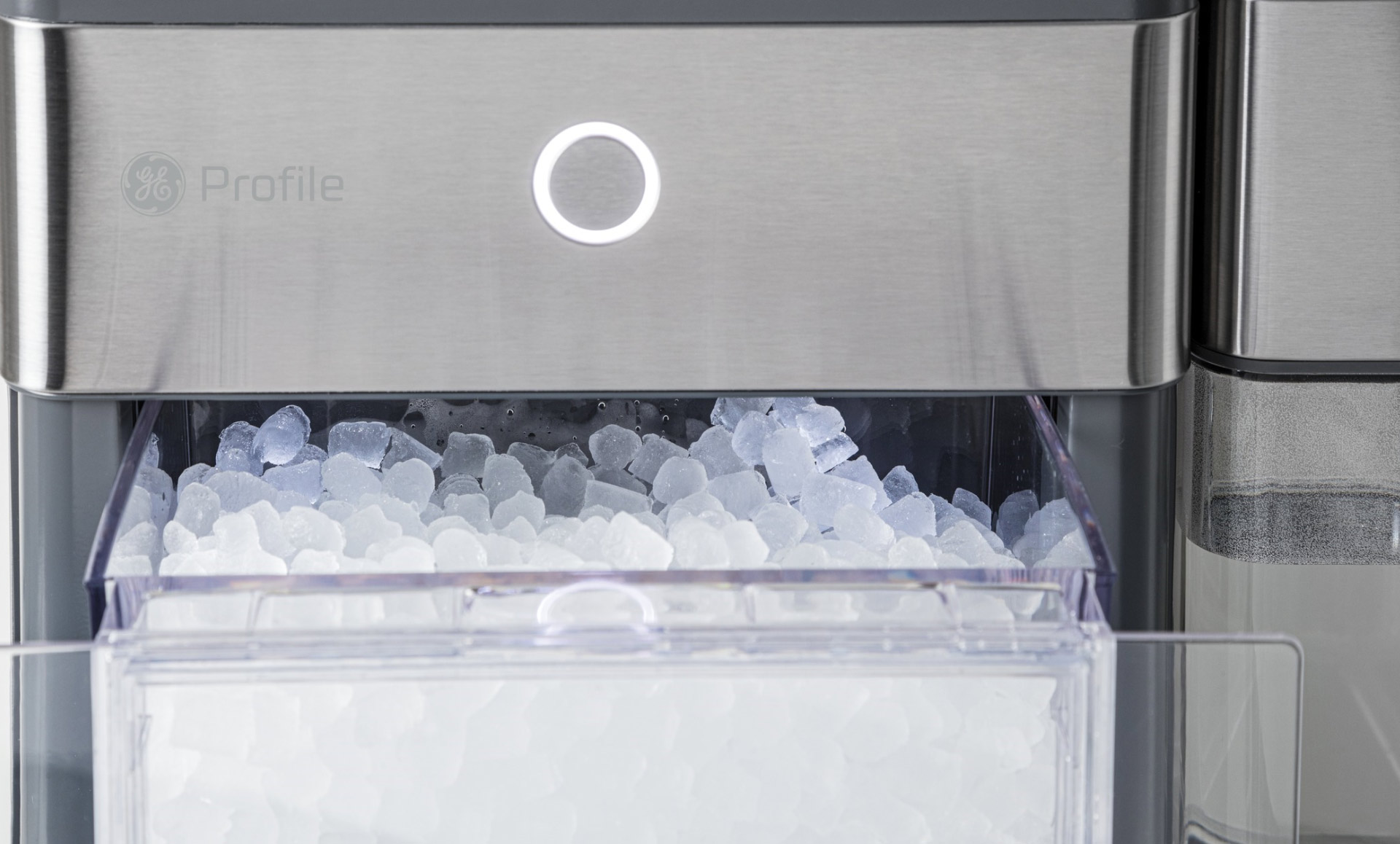
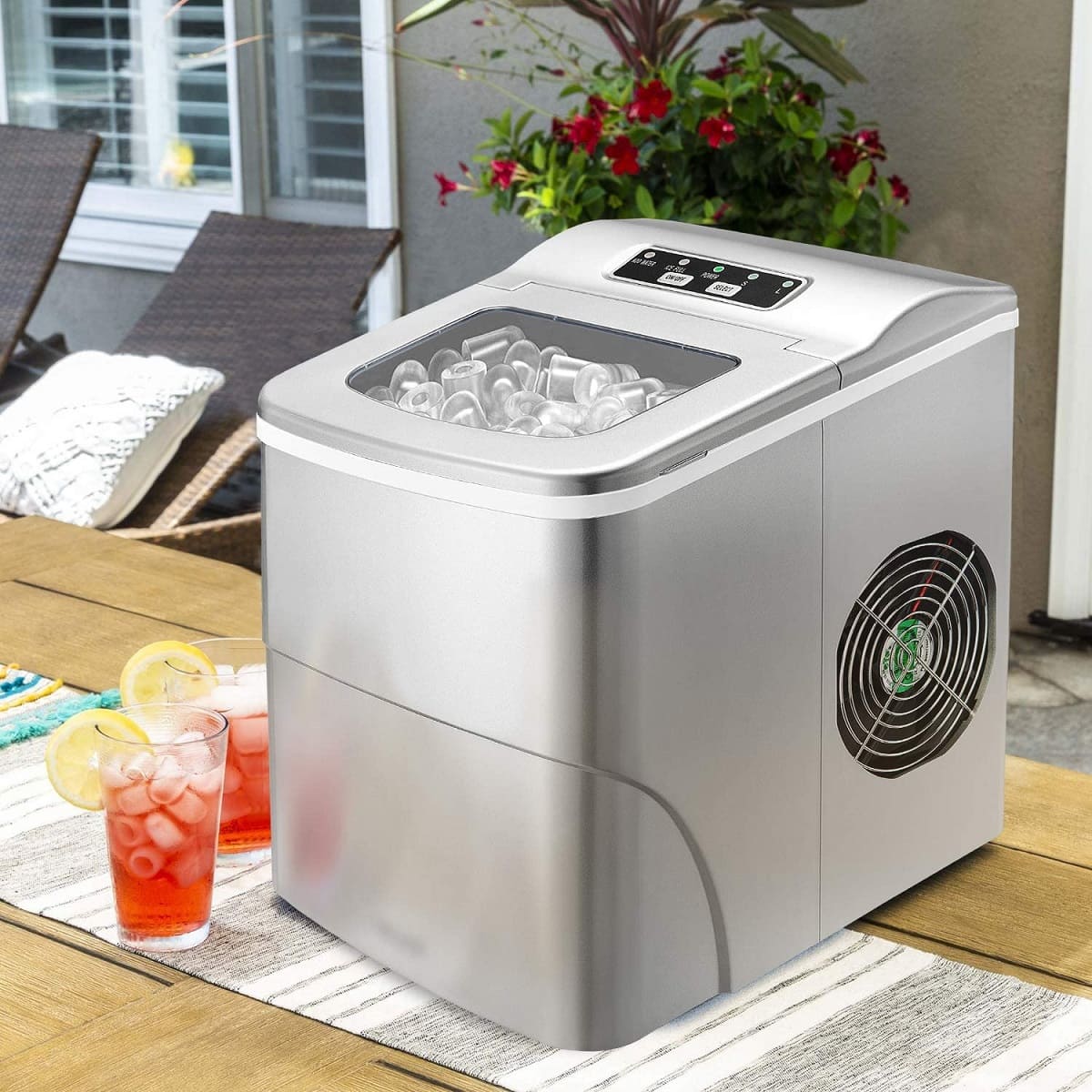
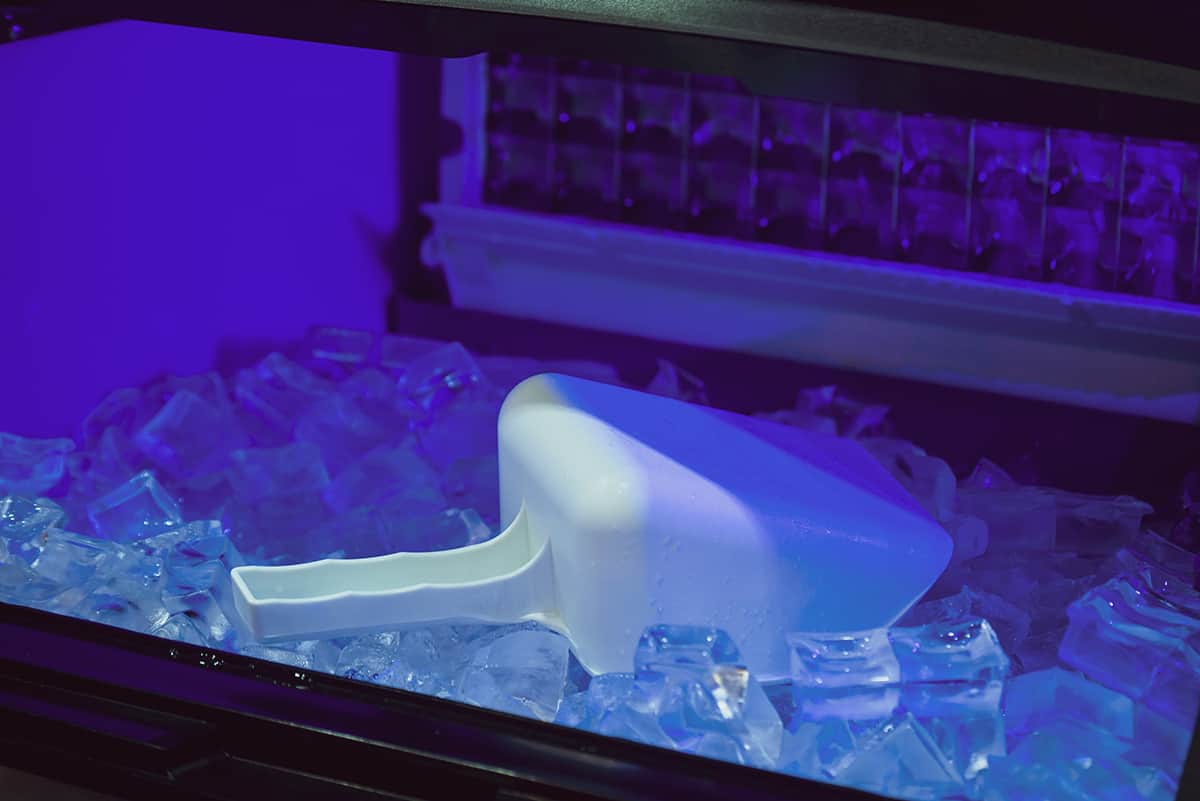

0 thoughts on “How Does An Ice Maker Work?”